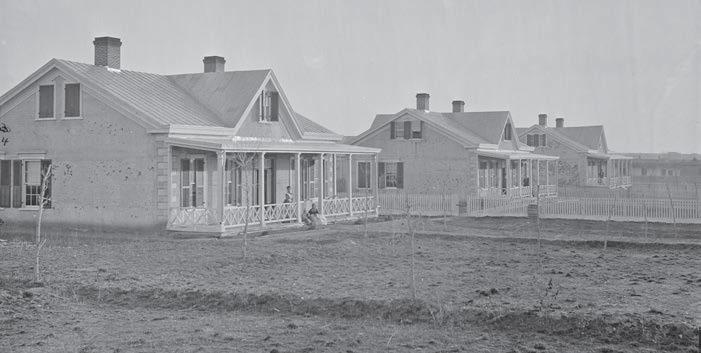
2 minute read
Everything Must Go As Museum Moves In Grant Avenue
Many of the Safeway grocery stores of the mid-20th Century are monuments to modern design and Mad Men-era consumer culture. Sleek. Shiny. Lots of glass.
But when the chain built a new grocery store on Grant Avenue in the 1960s, even it couldn’t help but nod to the Santa Fe style. The store, with a stucco exterior, featured a long portal.
Advertisement
Aside from the parking lot and the boxy shape of the building, it looked nothing like the big, breezy stores the chain was constructing elsewhere.
Still, its opening in 1966 was an occasion. The store boasted air conditioning. There was a separate meat cutting room shoppers could see through a window to watch butchers prepare meat that would then be delivered to them on a conveyor belt.
For decades, the Safeway just a couple blocks from Santa Fe Plaza was a hub for downtown residents. And the store’s rise and fall in some ways traces downtown’s own arc as it has been shaped by urban renewal, the rise of the automobile and the growth of tourism.
Closed in 1992, the store is now slated for demolition.
The Georgia O’Keeffe Museum plans to construct a new building on the site that will provide a bigger space right on Grant for the famed artist’s work. Where the street is now fronted by a parking lot, its future facade, designed by DNCA architects, will likely call to mind O’Keeffe’s paintings of Ranchos de Taos and adobes across the Southwestern landscape.
“We’re looking to O’Keeffe and O’Keeffe’s vision for New Mexico as an inspiration,” Deputy Director Jennifer Foley told members during an open house last fall.
Few may miss what’s there now and the demolition is just the latest transformation for the site, which hasn’t been left alone for long.
Once part of Fort Marcy Military Reservation, the US Army built officers’ houses on the land in the 1870s, a historic inventory by city staff says. After the military withdrew from the fort, the federal government briefly eyed the site as a national sanatorium for tuberculosis patients before turning the land over to the city. The officers’ quarters were put up for sale and, according to a historical review by city staff, the residents who would move in reflected the diversity of Santa Fe.

Hyman and Sarah Galanter, for example, were immigrants from Latvia who ran a dry goods store in town, and Alex and Ethel Kalanges, immigrants from Greece, ran a café downtown. Later, Yacki Raizizun would move in. A spiritualist born in India, he lectured widely and authored several books on yoga, the occult, dreams and more.
By 1941, Safeway was eying the spot for its next store in Santa Fe.
Gordon F. Street, a former principal in John Gaw Meem’s architectural firm, designed the shop to reflect one of the big changes sweeping retail at the time. Rather than stores stocking goods behind counters, the merchandise was arranged in aisles. Customers could collect their own groceries and pay at a cash register on the way out.
But by the 1960s, the store was outmoded.
Safeway wanted more space and more parking. By 1992, Safeway had spun off many of its Southwestern stores to a chain called Furr’s and the Santa Fe store shuttered, though the building remained. Over the years, the building became office space for a title company and was also occupied by an art gallery.
The O’Keeffe Museum has used at least part of the building as an annex since the late 1990s, welcoming countless field trips.
To many, though, it remains the old Safeway. (Andrew Oxford)










